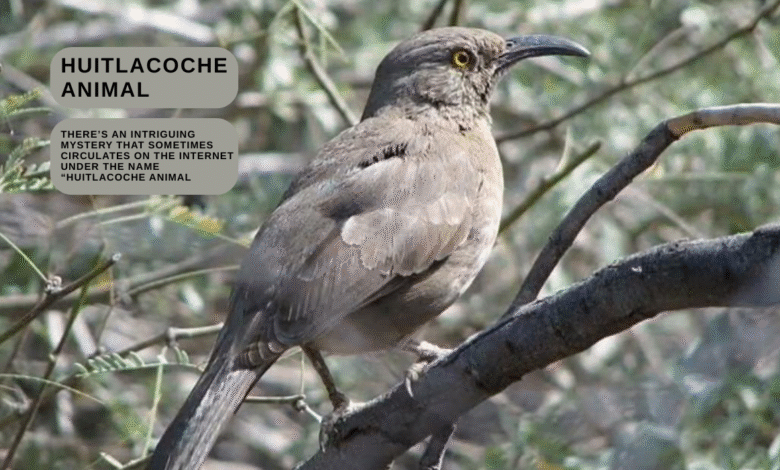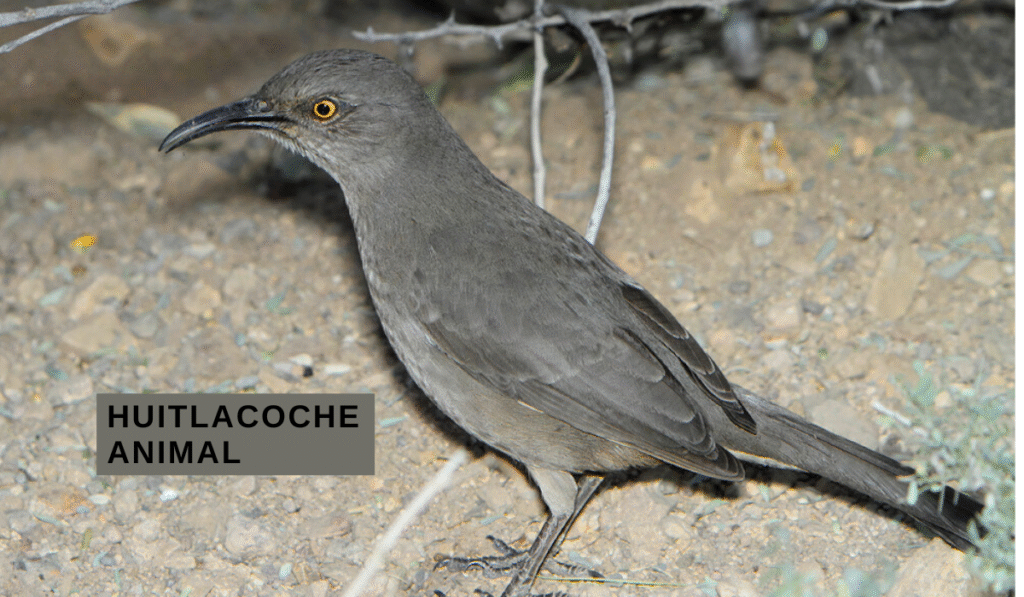Huitlacoche Animal The Astonishing Truth Behind Mexico’s Hidden Culinary Treasure

There’s an intriguing mystery that sometimes circulates on the internet under the name “Huitlacoche Animal.” At first glance, it sounds like the name of some exotic creature — maybe a rare bird or a strange mammal from the heart of Mexico. But the truth is both simpler and far more fascinating. Huitlacoche is not an animal at all, but rather a living organism of another kingdom entirely — a fungus that transforms ordinary corn into something extraordinary. Known scientifically as Ustilago maydis, it infects ears of maize, causing the kernels to swell into grey, bulbous shapes filled with a dark, smoky, edible substance. Far from being a pest, this fungus has been celebrated in Mexican cuisine for centuries and is even called the “Mexican truffle.” The story of huitlacoche is one of transformation — from crop disease to gourmet delicacy, from field fungus to national treasure.
What Is Huitlacoche?
Huitlacoche forms when a fungus invades the corn plant, feeding on the kernels and causing them to expand dramatically. What would normally be a plump yellow kernel becomes a soft grey pod that eventually turns black as spores mature. For most farmers outside Mexico, this is a nightmare — a sign that a portion of the crop is ruined. But in Mexican culture, those swollen ears are harvested before they dry out, cooked, and served as a delicacy with a flavour that resembles mushrooms mixed with the sweetness of corn and the earthiness of truffles. When eaten young, huitlacoche is tender and juicy, with a smoky aroma that deepens when roasted. It’s an ingredient that transforms a simple tortilla or quesadilla into something memorable.
The Confusion About “Animal”
So why does the internet sometimes call it the “Huitlacoche animal”? The confusion likely comes from the similarity between the word huitlacoche and cuitlacoche, which in Spanish also refers to a family of birds known as mockingbirds or thrashers. Over time, language drift and mistranslation caused people to mix the two meanings. Some believe “huitlacoche” refers to a mythical creature, while others think it’s an animal that spreads the fungus. In reality, the true huitlacoche has nothing to do with animals — it is a plant fungus, part of the same biological world as mushrooms, yeasts, and molds. The word simply carries ancient echoes of indigenous languages where the meanings of animal, crop, and spirit often intertwined.
Huitlacoche Animal Bio Table
| Attribute | Details |
|---|---|
| Scientific Name | Ustilago maydis |
| Common Name | Huitlacoche, Mexican Truffle |
| Type | Fungus (Not an Animal) |
| Origin | Central Mexico |
| Appearance | Grey to black swollen galls on corn kernels |
| Flavor | Earthy, smoky, slightly sweet, umami-rich |
| Nutritional Value | High in protein, fiber, lysine, minerals, and antioxidants |
| Culinary Use | Quesadillas, tamales, soups, pasta, gourmet dishes |
| Season | Summer and rainy months (July–September) |
| Cultural Significance | Consumed since Aztec times; considered a delicacy |
| Economic Value | Specialty ingredient, higher market price than normal corn |
| Height/Size | Usually 1–5 cm across individual galls |
| Social Media Presence | N/A (featured in food blogs and culinary photography) |
| Fun Fact | Sometimes mistakenly called “huitlacoche animal” due to translation myths |
A Gift From Ancient Mexico
Long before Spanish colonization, the Aztecs and other indigenous peoples of central Mexico already knew about huitlacoche. They called it a gift from the gods, a natural transformation of corn that made it more nutritious and flavorful. While European farmers later viewed it as a plague, the people of Mexico embraced it. In Aztec markets, huitlacoche was sold alongside chiles, beans, and cacao. Today, it still appears in traditional markets across Mexico City, Puebla, and Oaxaca. Modern chefs have rediscovered it, too — turning it into soups, sauces, and even pastas served in fine dining restaurants. The transformation of huitlacoche from a farmer’s blight to a chef’s delight is a story about cultural perspective — one culture’s waste is another’s wonder.
Nutrition and Health Benefits
Beyond its culinary charm, huitlacoche is surprisingly rich in nutrients. It contains more protein and amino acids than regular corn, especially lysine — an essential amino acid that normal corn lacks. It also provides fiber, vitamins like B2 and B3, and minerals such as phosphorus, magnesium, and iron. Because it’s a fungus, it also produces bioactive compounds like antioxidants and flavonoids that can help neutralize free radicals in the body. Many people describe it as a “superfood in disguise,” combining the carbohydrates of corn with the nutritional benefits of mushrooms. Traditional healers even used it to improve digestion and energy. While modern science is still exploring its exact health properties, it’s clear that huitlacoche offers much more than its humble appearance suggests.
The Taste and Texture
Describing the taste of huitlacoche is like describing a landscape — it’s complex, layered, and changes depending on how it’s cooked. When sautéed, it releases a smoky, earthy aroma, somewhere between roasted corn and wild mushrooms. The flavour is savoury with a hint of sweetness and a slight tang that deepens when paired with cheese, onion, or garlic. Some compare it to truffles because of its umami depth. The texture is soft and velvety, especially when fresh, making it perfect for tacos, quesadillas, tamales, or soups. Its natural black colour also gives dishes a dramatic visual appeal — a rustic elegance that makes Mexican cuisine stand out on the world stage.
Huitlacoche in Modern Cuisine
In Mexico, huitlacoche is more than food — it’s a symbol of identity and creativity. Street vendors serve huitlacoche quesadillas stuffed with melting cheese and salsa, while upscale restaurants serve huitlacoche ravioli or risotto. Even in the United States, gourmet chefs have started importing it frozen or canned, calling it “Mexican caviar.” It’s often used to add a smoky, earthy twist to vegetarian dishes. Because of its growing reputation, farmers in certain regions now intentionally inoculate corn plants with the fungus, turning what was once a disease into a profitable crop. In that sense, huitlacoche represents a rare example of how humanity can turn a natural flaw into a form of art.
Economic Value and Cultivation
For years, huitlacoche was considered worthless outside Mexico — something to be destroyed before it spread. But now, global demand has begun to rise. A single ear of corn infected with huitlacoche can sell for several times the price of an ordinary ear. Farmers have learned to encourage infection under controlled conditions, using humidity and heat to create ideal environments for fungal growth. In areas like central Mexico, huitlacoche is harvested seasonally, usually in the rainy months between July and September. Because it spoils quickly, it’s often sold within days or preserved in jars or frozen packs. This growing interest in huitlacoche farming offers a sustainable way for small-scale farmers to diversify income while keeping traditional practices alive.
Symbolism and Folklore
The story of huitlacoche also has a poetic side. In indigenous folklore, the fungus was seen as a form of transformation and renewal — proof that even decay could create beauty. Some myths say the spirit of the maize god sleeps inside the black fungus, awakening only when rain touches the fields. Others saw it as a reminder that life and death are connected, that even disease can yield nourishment. The confusion between “huitlacoche” the fungus and “cuitlacoche” the bird also adds to its mythical aura — a strange echo between plant, animal, and spirit that makes the name feel alive with hidden meaning.
The “Huitlacoche Animal” Myth
In recent years, online posts have circulated calling it the “huitlacoche animal,” sometimes with images of strange creatures or birds attached. This has created a kind of internet myth — a blend of biology and fantasy. Some think of the huitlacoche animal as a symbolic guardian of the cornfields, others as a misunderstanding born from translation. While amusing, the truth is clear: there is no such animal. The fungus may attract insects or birds that feed on the infected corn, but they are not the huitlacoche itself. Still, the myth persists, perhaps because people are naturally drawn to mystery. It’s a reminder of how language evolves and how folklore and science often intertwine in unexpected ways.

Huitlacoche and Modern Science
Scientists today are paying closer attention to huitlacoche not only for its taste but also for its potential applications in biotechnology and medicine. Because it produces unique enzymes and bioactive compounds, researchers are exploring how it might be used to create natural antioxidants or antimicrobial substances. Some studies have even suggested that its extracts could help with the development of eco-friendly industrial materials. Meanwhile, food scientists are experimenting with huitlacoche powder as an ingredient in breads, chips, and tortillas to enhance nutrition. It’s an exciting example of how traditional foods can inspire modern innovation.
Personalities, Appearance, and Popularity
If we were to describe Huitlacoche as if it were a personality — since many blogs use “animal profile” formats — it would have an age of centuries, born long before modern agriculture. Its appearance is distinctive: soft grey lumps with a silky black interior, sometimes compared to volcanic rock or roasted eggplant. Its family belongs to the fungi kingdom, sharing distant ancestry with mushrooms and yeasts. Its height depends on the corn kernel it infects, often just a few centimeters across. As for its net worth, it’s rising every year — a testament to how valuable rare ingredients can become. And though it has no social media account, huitlacoche has become a star in food photography and culinary blogs worldwide, admired for its dark beauty and exotic taste.
Conclusion
Huitlacoche, sometimes mistakenly called the “huitlacoche animal,” is a living symbol of transformation. It’s proof that beauty can come from what we fear, that decay can feed creativity, and that culture can redefine nature. From the ancient fields of the Aztecs to the modern kitchens of gourmet chefs, it has traveled across time carrying the same message: value lies in perspective. Whether you see it as a fungus, a delicacy, or a myth, huitlacoche invites us to look at the world differently — to see that even in the shadows, there is nourishment and wonder waiting to be discovered.
FAQs
1. What is a Huitlacoche Animal?
The huitlacoche animal is actually a fungus, not a real animal, that infects corn and creates edible galls. It’s valued in Mexican cuisine for its unique taste and texture.
2. Is the Huitlacoche Animal safe to eat?
Yes, the huitlacoche animal is completely safe when harvested fresh and cooked properly, offering both flavor and nutrition.
3. Why is it called the Huitlacoche Animal?
The term “huitlacoche animal” is a misnomer from translation errors, but it continues to be used to describe the corn fungus in some regions.
4. What does the Huitlacoche Animal taste like?
The huitlacoche animal has a smoky, earthy flavor with subtle sweetness, often compared to mushrooms or truffles.
5. Can the Huitlacoche Animal be cultivated?
Yes, farmers can intentionally grow the huitlacoche animal on corn under controlled conditions to harvest it as a specialty delicacy.


